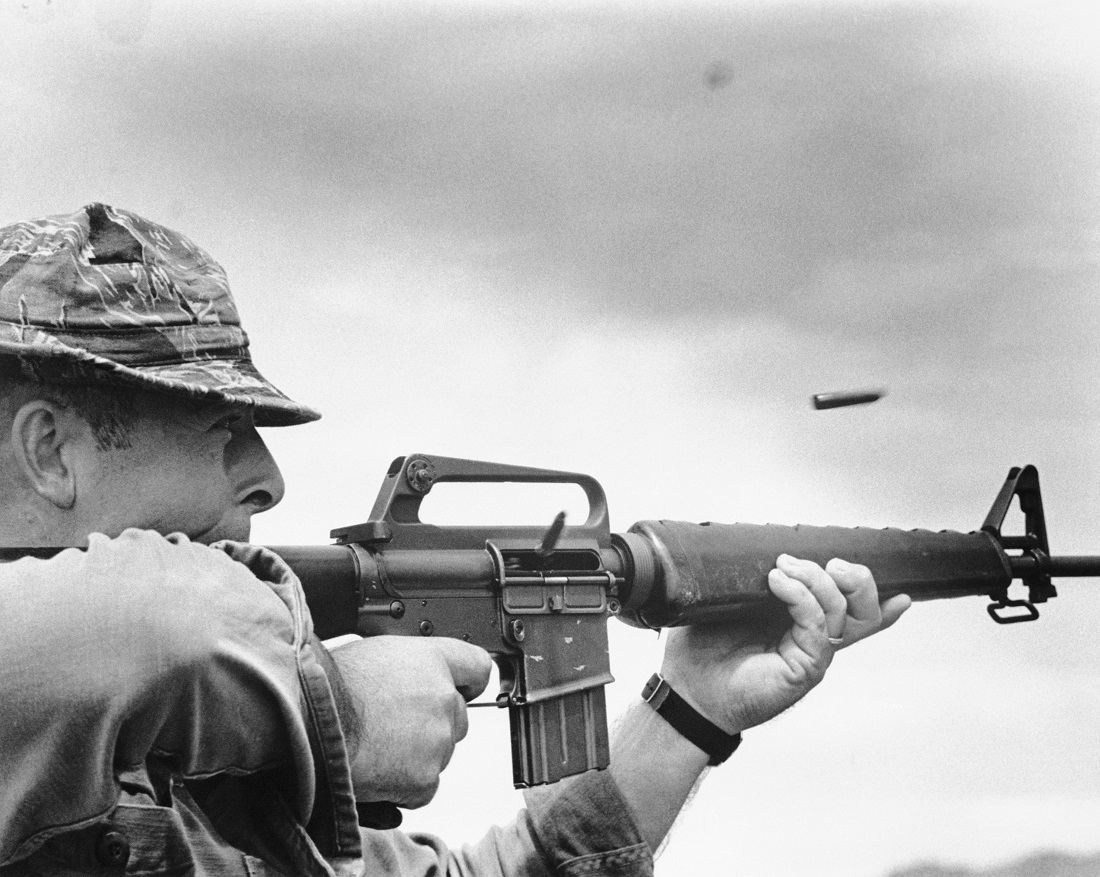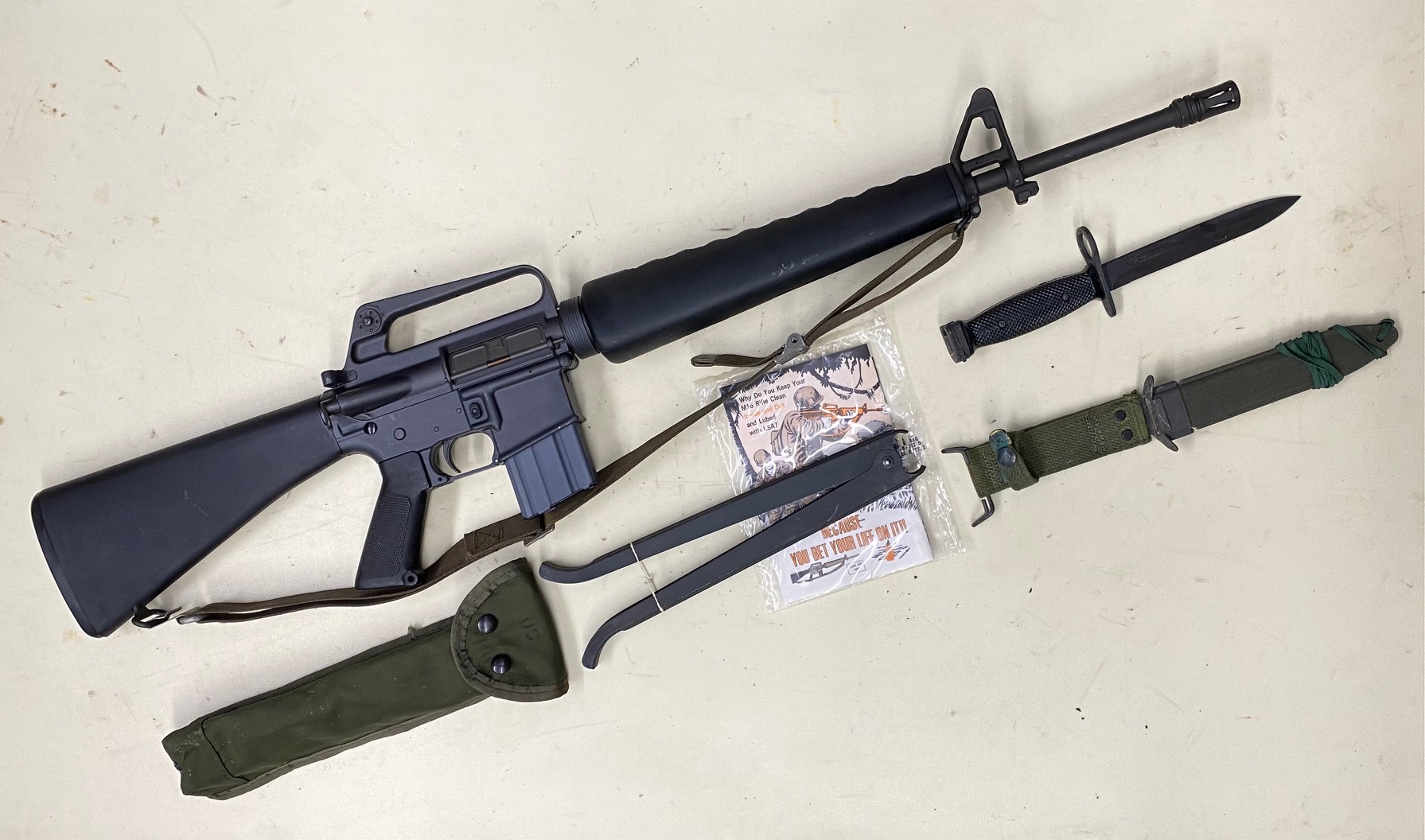M-16 In Vietnam - Here's what you'll remember: In the summer of 1966, rumors of problems with the rifle began to leave Vietnam. Rumors about weapons that do not feed, do not fire and do not translate.
Part one of this series, we discussed the US Army's M16 M16 rifle, which was born in the M16 M16 rifle. The M16 promised lighter weight and more lethality, but was it all it cracked up to be? In this episode, we follow the gun to Vietnam, where the weapon was created because it was unreliable - a name it doesn't deserve.
M-16 In Vietnam

As the US military began making major commitments to the conflict in Vietnam, he began supplying the US Army and Marine Corps with new weapons. M16 Rifle Designed by Armalite and manufactured by Colt, the M16 assault rifle is smaller and lighter than its predecessor, the newer M14 rifle. The M16, used by US Special Forces and South Vietnamese forces, has received glowing reviews in the areas of usability and lethality, they said. The Army and Air Force sold 104,000 rifles in November 1963.
American Vietnam Era M16 Assault Rifle And Kit
When American forces entered Vietnam, their soldiers were re-equipped with the M16. Units such as the 1st Cavalry Division, 173rd Airborne Brigade, and 101st Airborne Division carried the M16 on their first major deployment with the US Army. Unlike the M16, with its plastic parts replacing the wood and steel of the M14, the new rifle won over many skeptics, and the Army and Marine Corps ordered 419,277 rifles in 1966.
In the summer of 1966, rumors began to emerge from Vietnam about problems with weapons. Rumors about weapons that do not feed, do not fire and do not translate. As the year passed by the prosecutor's office. In the first week of October 1966, the commander of the 1st Army's 2nd Infantry Division of the 1st Infantry Division informed his troops that there were many problems with the new XM16E1 rifles, "to the extent that the trust.
US Army Vietnam commander General William Westmoreland asked a technical assistance team to visit the M16-equipped teams, which lasted six weeks. One of Colt's experts, a veteran of the US Army, returned the statement that "he had never seen equipment so badly maintained." He noted that many soldiers did not protect their rifles, did not learn how to take care of the rifles and did not see the M16 until Vietnam. Many believe the rumor — some say it was started by Colt himself — that rifles don't need to be cleaned. The school has limited cleaning supplies for messes. As a result, many rifles remain in extremely poor condition.
Now, in 1963, the army made a very important decision: it changed from IMR 4475 powder to WC 846 powder. The WC 846 lowered the chamber and increased the velocity, both good things, but in terms of burning more mud, increased carbon production, and the increased rate of fire of the M16.
Us Marine Soldier W M 16 Gun & Guitar Khe Sanh Vietnam War…
At the same time, another issue was raised to help solve the problem. Contrary to popular belief, all guns need to be cleaned because they slowly build up grease, grime, and carbon in the field. Rather than neglect, the M16 rifle requires regular maintenance. The M16's gas injection system delivers hot powder gases that exit the muzzle from the rear of the bullet through a tube to the upper target. This gas pushes the cartridge back, ejects the brass cartridge, picks up a new cartridge, and fires the weapon again. In semi-automatic mode this process repeats with each pull of the trigger, while in full-automatic mode it repeats as long as the trigger is held.
Another problem with the exhaust system is the return of carbon and other dust residues left in the cleaner, which can cause bad air in the room and even cause malfunctions. The problem of hot gases and residues increased with the use of new propellant and afterburning, increasing the need for continuous cleaning. This problem with the tendency of not cleaning the weapons of the troops causes frequent mistakes.
This is not the only problem with the M16. Bullets deteriorate quickly in the hot, humid climate of Southeast Asia, and the magazine's feeding lips bend easily, making feeding difficult. The Army refused to chrome the chamber and as a result the rifle suffered from bad chamber problems. The gun is in burst mode. Barrel, carrier and other steel parts. Copper drums are so fragile that they break into pieces during mining.

The problem of field maintenance has increased rapidly. Field units show a failure rate of up to 30%, which reduces the number of infantry with weapons that have to fight to an unacceptable level. Assault rifles are often blamed for contributing to soldier deaths, and some soldiers and infantrymen have opted for the AK-47 instead.
Ak 47 Vs M16 Rifle During The Vietnam War
In 1967, Colt and the Army agreed to make some changes to the rifle to improve reliability. The M16's rate of fire can be slowed down, the plastic stock is tougher using thicker plastic, and the chamber and barrel are chrome-plated to protect against corrosion. . Colt makes the steel parts with a phosphate coating to prevent corrosion and improve the anodization of the aluminum. The first guns with this modification were in the field at the end of 1967, and the rest were installed at the end of 1968.
Against this slow schedule, the only thing soldiers and Marines can quickly do to make their rifles more reliable is to clean them, but as journalist C. Javers pointed out, that may be a minor issue because similar forces—with similar upgrade - show some problems with the old M14 rifle. Much of the gun's poor reliability is a large part of the gun's engineering and fuel-efficiency problems, and hardware improvements have actually increased its maintenance reliability.
In the 1970s, a new rifle called the M16A1 replaced the old XM16E1. The critical problems were eliminated, which was a success, but it took four years for the rifle to become as reliable as originally advertised. The M16A1 was in combat for fifteen years, and it was the mid-1980s, before the US Army and Marines began a new round of upgrades to the long-range rifle. The new weapons were designed not against Vietcong guerrillas in the jungle, but against Soviet armored personnel carriers on the battlefields of Western Europe.
Kyle Mizokami is a San Francisco-based defense and national security writer who has appeared in The Diplomat, Foreign Policy, The Boring War, and Daily Beast Sports. In 2009, he founded the defense and security blog Japan Security Watch. You can follow him on Twitter: @KyleMizokami. This article was published two years ago and is being republished due to reader interest. Worldwide, it is the most produced rifle in .223 and is second only to the AK-47 in production of all post-WWII rifles. But, for everyone. In its modern day glory, the American rifle failed American soldiers in Vietnam. There are many parts of the dish that are vulnerable and the cook has more than enough to melt the sauce. This is the tragic story of the early days of the world's best military rifle.
M16 A1 Vietnam Professional Electric Rifles
In 1959, America chose the M-14 as our main weapon. It was the shortest rifle that served in this capacity. Heavy and unwieldy in automatic fire, compared to the Soviet AK-47, the M-14 was a classic at birth. America needed a weapon that could match the ambitions of the space age. Not surprisingly, it is a member of the space company that granted this dream. Armalite develops small devices that can be sold to manufacturers. Armalite employee Eugene Stoner was brought in to do a great job, and from his powerful mind came the gun of the future.
The M-16's advantage over any other rifle is impressive on paper. The amount of changes that Stoner's design includes is perfect for "Space Age" technology. This gun is light, accurate and has almost no recoil. Any soldier with a little practice can put any round in a box at 100 yards in less than 2 seconds. Combat is lighter, more flexible and more lethal. The first reports about the wounding of enemy soldiers were so terrible that they were recorded until the 1980s. Bullets penetrated the body and caused internal damage. Much appreciated by the M-16s issued to ARVN soldiers, the Green Berets insisted on issuing the weapon in 1962. The jump from the M-14 to the M-16 was like changing planes to planes. The design was sold to Colt and adopted by the US military in 1964. Optimism around the gun was very high. This is the first sign.
He

Schools in vietnam, foreign business in vietnam, women in vietnam, manufacturing in vietnam, textile manufacturers in vietnam, dating in vietnam, volunteer in vietnam, mag 16 vietnam, recruitment in vietnam, medical insurance in vietnam, health insurance in vietnam, vietnam m-16
0 Comments